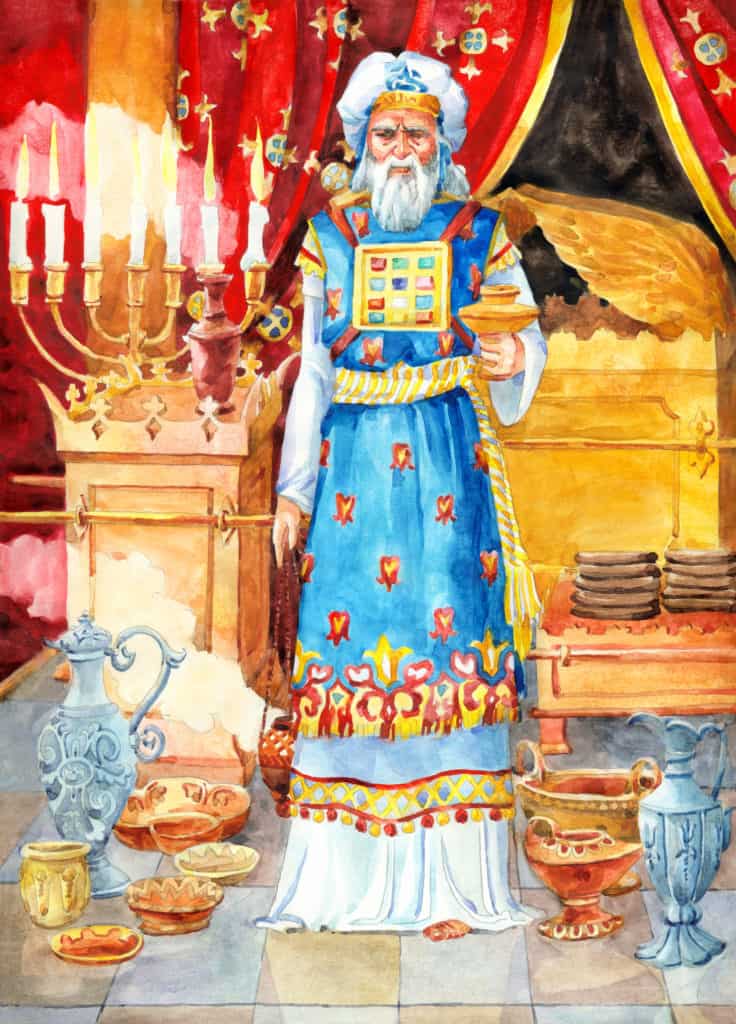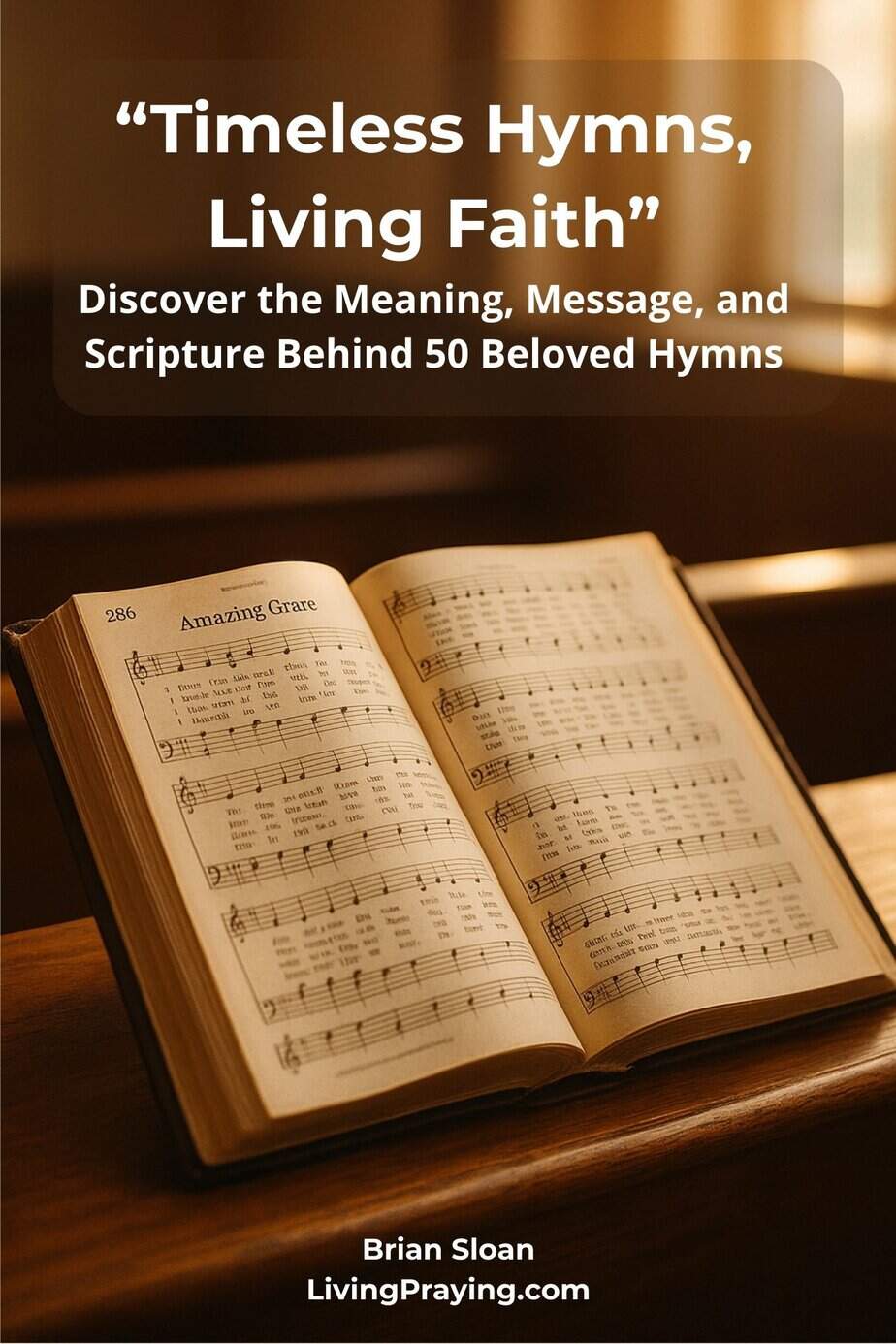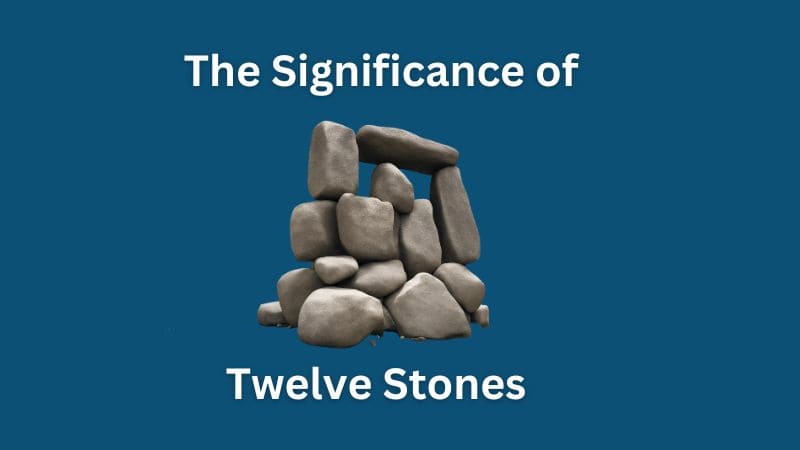The Significance of the 12 Stones in the Bible
The phrase “twelve stones in the Bible” carries deep meaning and powerful symbolism. Throughout Scripture, God uses even the smallest details to reveal profound truths. The twelve stones aren’t just rocks—they’re reminders, testimonies, and covenant markers that reflect God’s faithfulness and the unity of His people.
From Genesis to Revelation, the Bible weaves a rich tapestry of history, theology, and symbolic imagery. And few symbols appear as consistently or as meaningfully as the twelve stones. They show up in key moments—from the High Priest’s breastplate to the Jordan River memorial, from Elijah’s altar on Mount Carmel to the very foundations of the New Jerusalem.
These stones represent the twelve tribes of Israel, serving as vivid reminders of God’s unshakable promises. They weren’t placed randomly. They were divinely chosen to point back to God’s enduring covenant and forward to His eternal plan.
So, let’s walk together—from riverbanks to tabernacles, mountaintops to heavenly visions—and uncover the rich significance behind the twelve stones in the Bible.
| Topic | Details | Scripture |
|---|---|---|
| Main Reference | 12 stones taken from the Jordan River and set up at Gilgal | Joshua 4:1–9 |
| Purpose | Memorial of God’s faithfulness for future generations | Joshua 4:6–7 |
| Symbolism | God’s deliverance, covenant promise, reminder to teach children | Multiple passages |
| Number 12 Meaning | Represents God’s people (12 tribes, 12 apostles) | Various |
| Location | Stones placed at Gilgal after crossing the Jordan | Joshua 4:20 |
| Spiritual Takeaway | God calls His people to remember and testify about His mighty works | Psalm 105:1–5 |

1. The High Priest’s Breastplate: A Sacred Display of the 12 Stones
Before we explore the broader significance of the 12 stones in the Bible, we must begin with one of their most detailed and beautiful appearances: the breastplate (or breastpiece) of the High Priest.
The Tabernacle and Its Symbolism
The Tabernacle was God’s portable sanctuary during Israel’s wilderness journey—a place of worship and sacrifice designed to house His divine presence. God gave Moses precise instructions for its construction (see Exodus 25–31), and every element of the Tabernacle was rich with spiritual meaning.
Though the entire structure is worth exploring, for our purpose, we’ll focus on one key element tied to the twelve stones: the High Priest’s sacred garment.
The Role and Attire of the High Priest
Aaron, the first High Priest, was appointed by God to intercede for the people of Israel. His clothing wasn’t just ceremonial—it was deeply symbolic. Every piece, including the ephod and breastpiece, reflected his holy calling and his role as a mediator between God and His covenant people.
At the center of his garments was the breastpiece of judgment—also called the breastplate—crafted with gold, blue, purple, and scarlet threads. It was folded into a square and attached to the ephod like an ornate apron.
And what made this breastpiece truly remarkable? Twelve precious stones, each engraved with the name of one of the twelve tribes of Israel.
The Stones and Their Significance
Set in four rows of three stones each, these gemstones were carefully mounted in gold. Here’s how they were arranged:
- First row: Carnelian, chrysolite, and beryl
- Second row: Turquoise, lapis lazuli, and emerald
- Third row: Jacinth, agate, and amethyst
- Fourth row: Topaz, onyx, and jasper
Each stone served as a reminder that the High Priest bore the people of Israel close to his heart whenever he entered the Holy Place (Exodus 28:29). The number twelve was no accident—it represented the unity and covenantal identity of God’s chosen people.
The breastplate was fastened securely to the ephod with golden chains and rings, as described in Exodus 28:22–28 (NASB):
“You shall also make on the breastpiece twisted chains of cord work in pure gold… so that the breastpiece will not come loose from the ephod.” (vv. 22, 28)
The detail God gives here is astounding—every thread and stone held purpose, pointing to His desire to dwell among His people and uphold His promises.
A Reflection of God’s Covenant
The twelve stones on the High Priest’s breastplate remind us that we serve a God who never forgets His people. Each tribe was represented, each name engraved. In the same way, through Christ—our Great High Priest—we are remembered, represented, and forever secure in His love.
As we continue our journey through the Bible, we’ll see the 12 stones appear again—this time in a moment of great transition and divine faithfulness: the crossing of the Jordan River.
Names of the 12 Stones on the High Priest’s Breastplate
The Hebrew names of the gems in Exodus 28:17–20 don’t map 1-to-1 to modern gem trade names across all translations. Below is a common list used in many Bibles:
| Row | Stone Names (common English) | Reference |
|---|---|---|
| Row 1 | Carnelian (Sardius), Chrysolite, Beryl | Exodus 28:17 |
| Row 2 | Turquoise, Lapis Lazuli (Sapphire), Emerald | Exodus 28:18 |
| Row 3 | Jacinth (Hyacinth), Agate, Amethyst | Exodus 28:19 |
| Row 4 | Topaz, Onyx, Jasper | Exodus 28:20 |
Each stone was engraved with the name of a tribe of Israel (Exodus 28:21). Ancient sources differ on exactly which tribe matched which stone, so most study Bibles avoid a definitive mapping.
2: The Memorial Stones at the Jordan River
Let’s step back into Joshua chapter 4, where we find the people of Israel preparing to cross the Jordan River. It wasn’t an easy crossing—the river was at flood stage, swollen and rushing with water.
But as soon as the priests carrying the Ark of the Covenant stepped into the river, something miraculous happened. The waters stopped. Just as at the Red Sea, God made a way where there was no way. The river backed up, forming a wall of water, and the people walked across on dry ground.
While the entire nation crossed over, the priests stood firm in the middle of the riverbed, holding the Ark on their shoulders. It was in that sacred moment that Joshua carried out God’s command regarding the memorial stones.
The First Set of Stones: A Memorial of God’s Faithfulness
Joshua was given specific instructions from God regarding the 12 stones. These weren’t just random rocks—they were to become a visible, powerful reminder of God’s presence and power.
So Joshua called the twelve men whom he had appointed from the sons of Israel, one man from each tribe; and Joshua said to them, “Cross again to the ark of the Lord your God into the middle of the Jordan, and each of you take up a stone on his shoulder, according to the number of the tribes of the sons of Israel.
This shall be a sign among you; when your children ask later, saying, ‘What do these stones mean to you?’ then you shall say to them, ‘That the waters of the Jordan were cut off before the ark of the covenant of the Lord; when it crossed the Jordan, the waters of the Jordan were cut off.’ So these stones shall become a memorial to the sons of Israel forever.”
— Joshua 4:4–7 NASB
God instructed Joshua to build a stone memorial taken from the very middle of the Jordan River. These “stones of remembrance” would stand as a testimony of God’s faithfulness, a tangible reminder of His power and His promise.
Once the people crossed, one man from each of the 12 tribes picked up a stone and brought it to the far side of the river. There, they arranged the stones as a sacred memorial, marking the spot where the nation had entered the Promised Land—not by their own strength, but by the hand of the Lord.
For generations to come, children would see those stones and ask, “What do these mean?” And the answer would echo through time: God made a way. He kept His promise. He led us through.
🪨 The Second Set of Stones: A Hidden Testimony in the River
There’s something else easy to miss in the passage. In addition to the memorial on land, Joshua set up a second pile of twelve stones—but this time, he placed them right in the middle of the Jordan:
Then Joshua set up twelve stones in the middle of the Jordan at the place where the feet of the priests who carried the ark of the covenant were standing, and they are there to this day.
— Joshua 4:9 NASB
As long as the priests stood firm in the riverbed, the waters were held back. It was the Lord who made it possible. And right there—in the very place where God held back the floodwaters—Joshua built another memorial.
This hidden stack of stones wasn’t for visibility, but for reverence. It marked the exact place where the presence of God stood between His people and what should have been impossible.
These two stone memorials at the Jordan River serve as our second powerful example of the significance of the 12 stones in Scripture. One stood as a visible reminder on the shore. The other stood in the place of the miracle itself—a quiet marker of God’s power and presence.
Now, let’s look at other times in Scripture when twelve stones carried great meaning.
Give a One-Time Gift to LivingPraying.com
Your one-time gift helps keep this ministry going! Every donation allows us to create more faith-filled content, Bible studies, and worship resources to encourage believers worldwide. Thank you for your support!
Give a One-Time Gift (Debit/Credit) Give via PayPal🔥 3. Twelve Stones as an Altar (1 Kings 18)
This is one of my favorite stories in the Bible. It’s the powerful account of Elijah challenging the prophets of the false god Baal to prove who the One True God really is.
You may remember the story. This takes place during a time when the once-great nation of Israel was divided into two kingdoms—the northern kingdom of Israel and the southern kingdom of Judah.
Elijah’s challenge was simple: both he and the prophets of Baal would build an altar and sacrifice a bull. Then each group would call on their god to consume the offering with fire. The god who answered would be shown as the real, living God.
Well, things get a bit comical. The prophets of Baal built their altar and began calling on their god. They cried out for hours, shouting, dancing, even cutting themselves, trying to get a response. Elijah mocked them, suggesting maybe their god was asleep—or off on a trip, or deep in thought.
But of course, no fire came.
Then it was Elijah’s turn. He repaired the altar and prepared the sacrifice. But he didn’t stop there—he went above and beyond to prove the greatness of God. Elijah called for the altar to be soaked in water—so thoroughly drenched that the trench around it filled up as well.
Let’s look at where the twelve stones come into this incredible moment:
30 Then Elijah said to all the people, “Come forward to me.” So all the people came forward to him. And he repaired the altar of the Lord which had been torn down.
31 Then Elijah took twelve stones, corresponding to the number of the tribes of the sons of Jacob, to whom the word of the Lord had come, saying, “Israel shall be your name.”
32 And with the stones he built an altar in the name of the Lord; and he made a trench around the altar, large enough to hold two measures of seed.
33 Then he laid out the wood, and he cut the ox in pieces and placed it on the wood.
34 And he said, “Fill four large jars with water and pour it on the burnt offering and on the wood.” And he said, “Do it a second time,” so they did it a second time. Then he said, “Do it a third time,” so they did it a third time.
35 The water flowed around the altar, and he also filled the trench with water.
— 1 Kings 18:30–35 NASB
So, as you can see, Elijah used twelve stones to represent the twelve tribes of Israel—a powerful symbol, especially at a time when the nation was divided. This act declared that, no matter how fractured things looked, God still saw His people as one.
By drenching the entire altar, Elijah made it clear that only the Lord could bring the fire. There would be no room for tricks or coincidences. God alone would get the glory for what was about to happen.
Here’s the next part of the story:
36 Then at the time of the offering of the evening sacrifice, Elijah the prophet approached and said,
“Lord, God of Abraham, Isaac, and Israel, today let it be known that You are God in Israel and that I am Your servant, and that I have done all these things at Your word.
37 Answer me, Lord, answer me, so that this people may know that You, Lord, are God, and that You have turned their heart back.”
38 Then the fire of the Lord fell and consumed the burnt offering and the wood, and the stones and the dust; and it licked up the water that was in the trench.
39 When all the people saw this, they fell on their faces; and they said, “The Lord, He is God; the Lord, He is God!”
— 1 Kings 18:36–39 NASB
Wouldn’t you have loved to witness that? What an incredible display of God’s power and the faith of one obedient servant.
This unforgettable moment serves as our third example of the significance of twelve stones in the Bible. Elijah’s altar was more than a sacrifice—it was a declaration of God’s covenant with His people and a call to return to Him with wholehearted devotion.
💎 4. Twelve Stones in the New Jerusalem (Revelation 21)
Now we’re leaving the Old Testament behind and stepping deep into the New Testament—into the breathtaking, prophetic vision given to the Apostle John in the next-to-last chapter of the Bible: Revelation chapter 21.
Up to this point, John has been describing the unfolding of end-time events. But here, he’s being shown something glorious: a stunning glimpse of the New Jerusalem, the city of God, descending from heaven. It’s a vision of heaven’s capital city, the eternal home of God’s people.
The New Jerusalem will be unlike anything we can fully imagine. Its glory, beauty, and brilliance are described in such vivid detail, it surpasses anything ever seen on earth. The vision John received is rich with symbolism, but also rooted in real, heavenly detail—and once again, we see the number twelve appear in a significant way.
🕊️ Twelve Stones of the Gates
Let’s take a look at the Scripture passage in Revelation 21 where the twelve gates are described, and we again see the profound symbolism of twelve tied to God’s covenant people:
10 And he carried me away in the Spirit to a great and high mountain, and showed me the holy city, Jerusalem, coming down out of heaven from God,
11 having the glory of God. Her brilliance was like a very costly stone, as a stone of crystal-clear jasper.
12 It had a great and high wall, with twelve gates, and at the gates twelve angels; and names were written on them, which are the names of the twelve tribes of the sons of Israel.
— Revelation 21:10–12, NASB
Here, the angel shows John a radiant city descending from heaven—the holy city of God. One of the first things John notices is that this city has twelve gates, and each gate is attended by an angel. Written on the gates are the names of the twelve tribes of Israel.
Once again, we see God honoring the twelve tribes—the same twelve tribes represented in the stones that were set up at the Jordan River and in Elijah’s altar on Mount Carmel. Now, those twelve names are engraved into the very gates of the eternal city. This isn’t just symbolic—it’s eternal recognition of God’s covenant with His people.
The names of the tribes aren’t lost to history—they are carved into the very structure of heaven.

New Devotional eBook!
“Timeless Hymns, Living Faith”
A beautifully formatted 166-page devotional eBook packed full of content—exploring the meaning, message, and Scripture behind 50 of the most beloved hymns of all time.
- True stories behind the hymns we love
- Devotional reflections for each hymn
- Bible verses & closing prayers included
- Easy-to-read smartphone-formatted PDF
- Instant download — use today!
Limited Time Only $3.99
📘 Get Instant Access NowAnother Illustration of the Number 12
Once again, we see the incredibly important role that twelve stones play in the biblical narrative. But this time, the number twelve isn’t found on the gates—it’s seen in the foundation of the New Jerusalem itself.
In this same chapter of Revelation 21, we’re told that the wall of the city has twelve foundation stones, and each of these stones bears the name of one of the twelve apostles of the Lamb.
“And the wall of the city had twelve foundation stones, and on them were the twelve names of the twelve apostles of the Lamb.”
— Revelation 21:14, NASB
God chose to honor the apostles—those who walked with Jesus and carried His message to the world—by engraving their names into the foundation of the eternal city. These men were obedient to the Lord’s call, spreading the truth of the gospel, proclaiming God’s plan of salvation, and boldly sharing the message of His grace.
🧩 But Who Is the Twelfth Apostle?
Of course, this verse raises an interesting theological question: Who is the twelfth apostle named on the foundation stones?
As we know, Judas Iscariot, one of the original twelve, betrayed Jesus and later died. Afterward, the remaining apostles selected Matthias to replace him (Acts 1:23–26). However, there’s been debate among theologians about whether Matthias was the true, Spirit-appointed replacement—or whether the apostles acted too quickly before the coming of the Holy Spirit at Pentecost.
Because of that, some believe that the twelfth apostle is actually Paul, who was dramatically called by Christ on the road to Damascus and became the apostle to the Gentiles..
FAQ: 12 Stones in the Bible
What do the 12 stones in the Bible represent?
Most often, the 12 stones represent the 12 tribes of Israel and God’s covenant faithfulness. You see this in the High Priest’s breastplate (Exodus 28), the Jordan River memorial (Joshua 4), Elijah’s altar (1 Kings 18), and symbolically in the New Jerusalem (Revelation 21).
Why are there two memorials in Joshua 4?
Joshua set up one memorial at Gilgal (from stones taken out of the river) and a second stack in the riverbed where the priests had stood with the Ark (Joshua 4:9). The first is a public reminder for future generations; the second marks the location of God’s miracle.
What do the 12 foundation stones in Revelation 21 mean?
In Revelation 21:14, the city’s wall has twelve foundation stones bearing the names of the twelve apostles of the Lamb. Together with the twelve gates (tribes), the picture is of God’s one people—Old and New Covenant—brought together in Christ.
Are the exact gemstone names certain?
Not entirely. The Hebrew gem terms are ancient, and translations vary (e.g., “lapis lazuli” vs. “sapphire”). The theological point remains clear: each stone represents a tribe, engraved and carried over the High Priest’s heart (Exodus 28:21,29).
Wrapup
So, you can see in the incredible significance of the 12 stones in the Bible. Some point out that, in the instances of jewel stones, the variety of the stones can be interpreted or viewed as a symbol of diversity.
Each stone has its own color and character just as God’s people have varied races, backgrounds, and experiences. However, as we trust Christ as our Savior, the cross of Jesus Christ unifies us as believers.
Also, since gemstones are formed underground with intense heat and pressure, some say the stones can symbolize the tribulations, trials, and troubles that a believer can go through, coming out as people who shine and reflect the glory of God.
So, the significance of twelve stones in the Bible is quite substantial as we have seen in these examples. Whether it be in ancient times or the Lord’s goodness to us by allowing us in the New Jerusalem in the future, the choice of these ancient stones will continue to carry great meaning and symbolism for the Kingdom of God.
As we’ve seen, the number twelve and the symbolism of stones carry deep and enduring meaning throughout the pages of Scripture. From the memorial stones at the Jordan River to Elijah’s altar on Mount Carmel, and finally to the very gates and foundations of the New Jerusalem, these stones serve as sacred reminders of God’s covenant, His faithfulness, and His glory.
Some have pointed out that in passages involving gemstones, the variety and beauty of the stones may represent diversity within the family of God. Each stone has its own color, clarity, and character—just as God’s people come from different races, backgrounds, and experiences. And yet, when we trust in Christ, the cross unites us. We are made one in Him.
Others note that gemstones are formed under intense heat and pressure, deep beneath the surface of the earth. This, too, is a powerful picture: believers often walk through trials, tribulations, and refining seasons. But in Christ, we come out as people who reflect His glory—like jewels shaped by grace.
In every example we’ve explored, the use of twelve stones is not random or decorative. It is purposeful. Whether in ancient Israel’s past or in our eternal future, God continues to use these stones to point to His truth, His people, and His promises.
And perhaps that’s the most beautiful takeaway:
The same God who parted the waters, answered with fire, and built the heavenly city—still writes our names in His story.
Reflection Questions:
- If you were to build a “stone of remembrance” today, what moment in your life would it represent?
What has God done for you that you never want to forget? - Are there trials you’ve gone through that God used to shape you—like pressure forming a gemstone?
How has His glory been revealed in your life, even through hardship? - Do you ever struggle to feel like you belong in God’s story?
How does the image of your name—like the names on the gates or foundations of the New Jerusalem—remind you of your place in His Kingdom?
‘





Leave a Reply